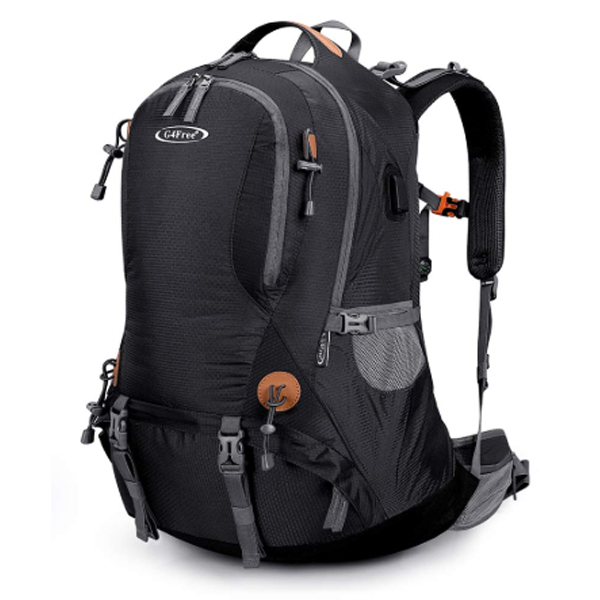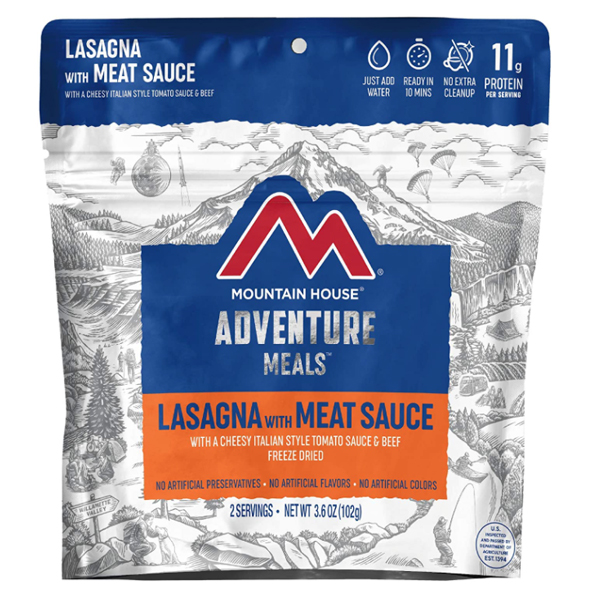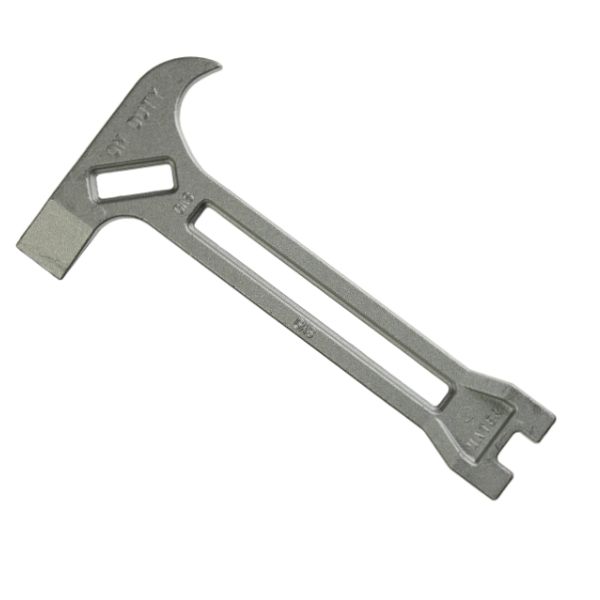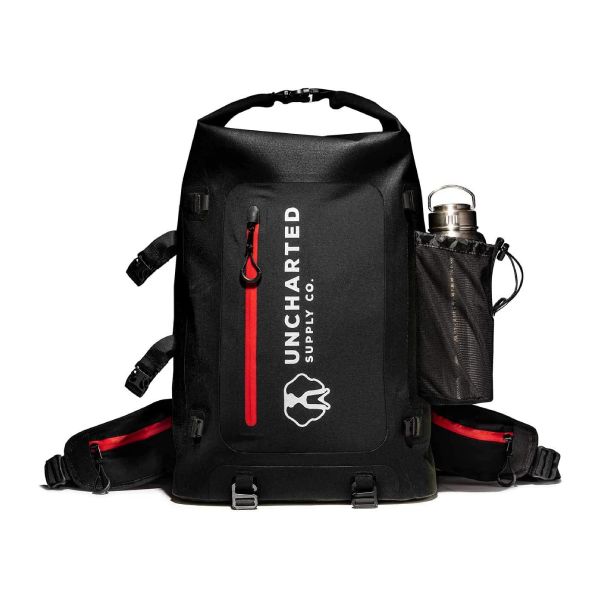Bear Spray vs Guns
This year in the US several people venturing into the outdoors were attacked by either bears, mountain lions, or other wild animals. Most survived - most without serious injury. Did any of them use bear spray or a gun?
Being ready with the right gear and knowledge can make all the difference. We’ve done quite a bit of research and have arrived at some pretty convincing conclusions.
Disclaimer - while we’ve done our research and feel very confident about our conclusions, we’re not experts on wildlife management so we urge you to do your own independent research.
The argument: are handguns or bear spray a better threat deterrent in the wilderness?
The Great Debate
I spend a TON of time outdoors: hiking, biking, fishing, camping, 4-wheeling, climbing/rapelling, shooting etc. My annual goal is to have 120 outings per year. In 2020 and 2021 I was on the trail 200 times. Wildlife encounters are super common.
Recently I was out with a group of guys at an outdoor gun range. I love to shoot but I’m not as avid as they are. They invite ex-navy seals, police, and other guests to train them including proper techniques and education on various tactical situations. They do drills with handguns, sport rifles, etc.
During their breaks they discuss procedures on how to diffuse common threat situations. At one event, a healthy debate broke out comparing the efficacy of bear spray versus handguns. They discussed state of mind (panic, adrenaline, etc), animal response, etc. It was quickly apparent who was on which side of the debate. They didn’t come to a convincing conclusion so I decided to research the topic.
My Conclusion: Bear spray outperforms handguns by a significant margin, has fewer liabilities, and should be carried as a first-option defense for bears, big cats, wolves, and other wild animals.
"...using bullets means twice the chance of significant injury..."
Big Animal Threats - How to React
If you spend any significant amount of time in the outdoors you're bound to encounter a large animal, often a predator. Here are some of the most threatening large animals across the country.
Bears
Bears can be huge and very aggressive animals. While they tend to avoid humans, if they have cubs, feel cornered or are very hungry they can charge or attack.
Experience: Stop!! Easy...Easy...
While riding ATVs near our cabin my daughter and I saw a bunch of fur on the crest of a hill on the trail we were on. As we got a bit closer I recognized the fur as bear fur. I stopped and started to back our ATV up to head the other direction.
Just then, the bear turned and stood on its hind legs. It was a full grown female grizzly bear and she was HUGE! She had been foraging and had no reason to engage with us. I revved the engine a couple of times and she lumbered off down the ravine. My daughter’s eyes were huge and I could tell her heart was beating out of her chest. It seems encounters come when least expected.
Most sources recommend not running from a bear - it triggers their predator/prey instinct. They recommend appearing big but not threatening. Don’t stare them down.
The spooky part is that oftentimes they will charge as a bluff. They don’t actually mean to attack but they want to show who’s boss. I imagine a charging bear would be pretty frightening.
Best to be prepared to defend yourself if needed.
Big Cats
Mountain lion and other big cat encounters are very rare. I’ve embarked on hundreds of outings and I’ve never seen a big cat in the wild. I’ve heard them scream, seen their tracks and scat, and seen their kills.
We’ve been told that cat attacks are usually stealthy. They usually only attack if cubs are near, they are sick, or extremely hungry.
Having the right defense equipment handy is super important.
Big Dogs
Coyotes rarely attack. However, wolves can be much more menacing - especially in a pack. They’re large and skilled hunters. They’ve been known to attack humans under the right circumstances.
My son had a lone wolf encounter a few years back. More on that story below.
I wish I would have equipped him better for that outing.
Moose
Oddly, moose can be as aggressive as any other large animal. They’ll protect their calves at a moment's notice.
I’ve had a number of close encounters with moose and every one got the blood pumping. They are huge animals.
Self defense against moose is similar to large predators.
Humans
Some time ago I read a post about an assault on the Appalachian Trail. A couple of hikers were held at gunpoint by a couple of men. The hikers ducked behind some trees on the trail. One of them pulled out his bear spray and held it around the tree and sprayed in the general direction of the assailants. It disabled them enough to escape and report the incident.
Handguns
I love to shoot firearms. I shoot handguns, sporting rifles, hunting rifles, shotguns, etc. One thing I’ve learned over the years is that it takes considerable gun training to become proficient and accurate in a tactical situation. It also takes a lot of training to know when to shoot. Military, police and other tactical forces train regularly to ensure proper use and safety. That said, there are certainly times when guns are required: food production, personal protection, etc.
Argument for Handguns
I have friends that swear up and down that carrying a handgun in the wilderness is a requirement. They carry on overnighters and day hikes. One guy even carries on his hip while mountain biking.
The claim is that a wildlife or human threat can present at any time. Being ready for self defense with a handgun and the right training can resolve the conflict quickly and with finality.
A certain confidence comes from carrying a weapon you are trained to use. Shooters often envision a threatening situation and resolving it by firing enough rounds to neutralize the threat.
There are plenty of articles online that discuss which caliber is best for big animals. Most sources claim a 9mm is too small. A .45 or 375 or larger is required to be effective.
Argument Against Handguns
There are several issues with handguns that should be considered before relying on a gun for protection in the wilderness.
- Accuracy - When I've trained with my friends we engage in timed shooting drills. They set up steel plates downrange and several stations. You shoot and move between stations to simulate tactical situations. Sometimes they’ll have you do math problems or they’ll heckle you to put you under stress. The more you have to move and the higher the stress, the less accurate you become.
Now imagine a charging bear. How accurate can you be with that type of stress as you are drawing from your holster and potentially moving?
It takes regular practice under simulated situations to really experience what you might be up against. - Animal anatomy - why is accuracy so important? Bears, big cats, big canines are durable, large animals. They’re built to hold up in the wild and fight other animals as they hunt their prey. It's hard to mame or kill a big animal. I've heard stories about how some bullets won't penetrate the body of a large animal. I've seen the skull of a bear that was shot in the head but the bullet ricocheted instead of penetrating because of the shot angle. How hard is it to hit a vital organ, vein, or otherwise mame the animal with thick skin and bones?
Predators produce adrenaline just like we do. What happens when you wound and hurt an animal without disabling it?
We’ve read articles and talked to wildlife experts that suggest that if you shoot an animal, it better be a fatal wound or the animal may become more enraged and aggressive. In some cases even a fatal wound isn't immediate so human injury still occurs. - Liability - making a mistake with a firearm can have permanent, very damaging consequences. When a firearm discharges by mistake it can harm humans, animals, equipment, etc.
Bullet overshoot is also a concern. What happens when you hit your target but the bullet keeps going? What if it changes direction while penetrating the target?
If you’re out with the family or a youth program, do you want the liability of an accidental discharge? If you have to use the weapon legitimately, do you want the consequences of a missed shot or overshoot striking someone or something important?
These three key factors, along with others, really make me pause when considering carrying in the wilderness. Perhaps I’d carry as a secondary means of protection.
Bear Spray
Argument for Bear Spray
Bear spray is a compressed canister of condensed pepper spray. The spray consists of aerosolized capsaicin, the same chemical that makes spicy food spicy. When it’s condensed and sprayed at an animal it deters them because it's so intense and they tend to have much stronger smell and taste senses than we do.
Experiment: Mythbusters Tests Cayenne Pepper on a Real Bear
There is a mythbusters episode where they test the efficacy of pepper on a domesticated bear. They put salmon in a cooler inside a vehicle. The bear breaks into the car and fishes the meat out of the cooler. They do a couple of tests to keep the bear away from the salmon - they all fail and it gets to chow down.
As a final test, they surround the car with a perimeter of cayenne pepper purchased at CostCo in a bulk container. The bear probes the perimeter to find a break in the pepper but it can't find a gap. Discouraged, it finally walks away. Even though the bear knows exactly where to go to get its reward, it won’t cross the perimeter because of the irritation of the pepper.
Why we love bear spray:
- Liability - it’s possible to accidentally discharge a canister of bear spray. Whoever is nearby will be in a lot of discomfort for some time. However, it’s unlikely anyone will die or be permanently injured. Overshoot can happen as well, but the chances of any permanent damage to a person is remote.
Experience: Bear Spray Explosion
I have a fishing buddy who fishes Canada with his brother in-law. One day they were on the river fishing a few hundred yards apart. Since they were in bear country they carried spray with them at all times. They would see grizzly bears frequently.
All of a sudden my friend heard his in-law screaming and looked to see him dancing around in the river with a cloud around him. At first, he thought it was bees or something. He made his way to the bank to go help him out. As he got close his nose began to run and his eyes became irritated. What had happened was during one of the fly rod casts the large streamer hook caught some part of the bear spray canister and when he cast forward it ripped the canister open releasing all of the spray at one time.
The brother in-law was blinded and could barely breathe for about 3 days. He finally recovered and they hiked out.
They laugh about it now but I’m sure it was intense at the time. The key, however...he did recover fully to laugh about it later. - Accuracy - Most bear sprays shoot in a stream. However, they spread out into a mist as they hit the air. A charging animal threat would very likely come into contact with it and the negative effects will take hold.
- Animal anatomy - Most big animals have VERY sensitive smell and taste senses. A man explained to us that when a bear is hit with spray snot starts pouring out of their noses and their eyes can weld shut until the effects wear off. The throat is irritated and coughing is induced. An animal can become completely disabled for some time.
- Anyone can use it - bear spray can be used by people not experienced with firearms, including youth.
Experience: Boy Meets Wolf
A few years ago we were on a biking outing. My son was up ahead while I coached his rookie sister along the trail. All of a sudden I heard him screaming and saw him running back toward me. When I got close enough he told me he had seen a wolf.
It had been laying under a bush by the trail where a band of deer hang out. As he rode by the wolf started running alongside trying to figure out what to do. My son stopped and dismounted his bike so it was between him and the wolf. He recalled his training in Boy Scouts and raised his arms in the air to make himself larger. The wolf heard our dog and decided to run off.
I really wished I would have equipped my son with bear spray on that outing - I'm sure he could have used it safely.
The US Fish and Wildlife issued an article some time ago. They track as many reported bear attacks as they can and the outcomes. A few stats they share are very convincing:
- “...persons encountering grizzlies and defending themselves with firearms suffer injury about 50% of the time”
- “During the same period, persons defending themselves with pepper spray escaped injury most of the time, and those that were injured experienced shorter duration attacks and less severe injuries”
- “Canadian bear biologist Dr. Stephen Herrero reached similar conclusions based on his own research -- a person’s chance of incurring serious injury from a charging grizzly doubles when bullets are fired versus when bear spray is used.”
Those statements are pretty convincing: using bullets means twice the chance of significant injury.
Argument Against Bear Spray
There are some downsides to using bear spray. Spraying one’s self might be the biggest liability.
- Wind - spraying upwind can be problematic. No one wants to experience the negative effects of bear spray.
- Distance - most canisters will shoot the spray 20-40 feet. That means the animal needs to be relatively close to effectively disable them.
Bear spray can cause some discomfort if misused but likely won’t cause permanent damage (people with asthma or other respiratory issues should do research to see how they will be affected by bear spray).
About This Article
Difficulty:
Scope:
Content:
Table of Contents
- Introduction
- Big Animals - How to React
- Handguns
- Arguments for
- Arguments against
- Bear Spray
- Arguments for
- Arguments against
- Conclusion
Recommended Products
Conclusion
When we look at the most significant factors surrounding the use of guns vs bear spray we prefer the option that poses the smallest threat to the user while working very effectively against large animals.
Conclusion: Bear spray outperforms handguns by a significant margin and has fewer liabilities and should be carried as a first-option defense for bears, big cats, wolves, and other wild animals.
We're not saying don't take a gun, but we do recommend using it as backup for the bear spray.
Additional Notes:
- A number of resources recommend NOT using bear spray as a preventative measure. They documented that some people would spray their kids on the back to deter bears. What they claim is that in a small dose, bear spray might actually attract bears. If they begin to associate the spray with people, it could cause the wrong behavior and they might begin to seek out the scent.
Recommended Products
1This post may contain affiliate links. If you make a purchase, I may earn a small commission at no additional cost to you.
2 As an Amazon Associate we earn from qualifying purchases.
3 Most reviews are based on personal experience from one of our content editors. Some are based on research and the opinions of other reviewers.






















